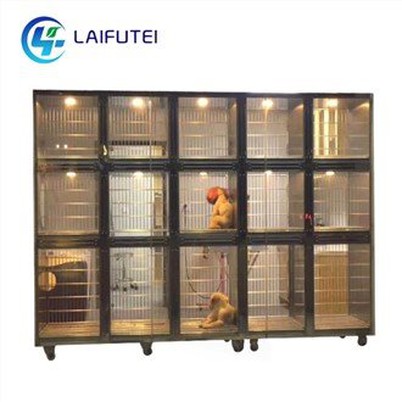What Is A Kind Of Cage For Pets Called?
Leave a message
What is a kind of cage for pets called?
The housing and containment of pets are essential for their safety, comfort, and overall well-being. As pet owners, we are responsible for providing them with a suitable living environment that mimics their natural habitat to ensure their happiness and health. One crucial aspect of pet housing is the cage, which serves as a secure space for domesticated animals. In this article, we will explore various types of cages designed specifically for pets and delve into the factors to consider when choosing the right cage for your furry friends.
Understanding the Importance of Pet Cages
Pet cages play a vital role in providing a sense of security and comfort to our beloved animal companions. They serve as a safe spot where pets can retreat to rest and feel a sense of ownership within their domain. Additionally, cages also serve practical purposes such as ensuring that pets do not wander off or come into contact with potential dangers. Depending on the type of pet, the cage''s design and size will vary to accommodate their specific needs.
Different Types of Pet Cages
1. Dog Cages: Dog cages, often referred to as crates, are commonly used for housing dogs. They are typically made of metal wire or plastic and come in various sizes to accommodate different dog breeds. These cages serve as a temporary shelter, training aid, and transportation container.
2. Cat Cages: Cat cages are designed to provide cats with a safe and enclosed space both indoors and outdoors. They are usually made of wire or mesh, providing ample ventilation and visibility. Cat cages are often used when introducing a new cat to a household, during vet visits, or as a temporary home for outdoor cats.
3. Bird Cages: Bird cages are specially designed to meet the needs of our feathered friends. They provide a space for birds to perch, fly within a confined area, and ensure their safety. The cage bars are spaced in a way that prevents birds from escaping while allowing for airflow and visibility.
4. Reptile Cages: Reptiles, such as snakes, lizards, and turtles, require habitats that resemble their natural environment. Reptile cages are typically made of glass or plastic and include various features like heat lamps, humidity control, and UVB lighting to mimic their wild habitat accurately.
5. Small Animal Cages: Hamsters, guinea pigs, rabbits, and other small animals require cages tailored to their specific needs. These cages typically include a wire or plastic construction with built-in tunnels, ramps, and shelter areas to encourage physical activity and exploration.
Factors to Consider When Choosing a Pet Cage
When selecting a cage for your pet, several factors should be taken into account to ensure their well-being:
1. Size: The cage should provide ample room for the pet to move, stretch, and exhibit natural behaviors. It should be spacious enough to accommodate toys, bedding, food, and water dishes comfortably.
2. Material: The cage material should be safe, sturdy, and easy to clean. Metal wire, mesh, or high-quality plastic are commonly used materials for pet cages.
3. Ventilation: Proper airflow is essential to prevent stagnant air and allow fresh air circulation. The cage design should include ventilation holes or bars that are appropriately spaced.
4. Accessibility: The cage should have openings or doors that allow easy access for cleaning, feeding, and interaction with the pet.
5. Safety: The cage should be escape-proof, with secure latches and locks. Additionally, it should be free from any sharp edges or potential hazards that could harm the pet.
6. Enrichment: Depending on the type of pet, consider the inclusion of enrichment elements like perches, toys, hiding spots, and climbing areas to promote mental stimulation and physical exercise.
Maintenance and Care for Pet Cages
Proper maintenance and regular cleaning of pet cages are crucial for the health and well-being of your pets. Here are some tips on keeping pet cages clean:
1. Regularly remove waste and soiled bedding from the cage. This will help maintain a hygienic environment and prevent odors.
2. Clean the cage using a mild pet-safe detergent and warm water. Rinse thoroughly and dry it completely before reintroducing your pet.
3. Wash any accessories, such as food and water dishes, toys, and bedding, separately and regularly.
4. Clean the cage bars or mesh with a pet-safe disinfectant to eliminate bacteria and prevent the buildup of dirt.
In Conclusion
A pet cage serves as a haven for our cherished animal companions, providing them with a safe and comfortable living space. Understanding the various types of pet cages available and considering the specific needs of your pet will help you make an informed decision when selecting a cage. Remember to prioritize the size, material, ventilation, accessibility, safety, and enrichment aspects of the cage to ensure the well-being of your pet. Regular care and maintenance are essential for keeping the cage clean and providing a healthy habitat for your furry or feathered friend.







